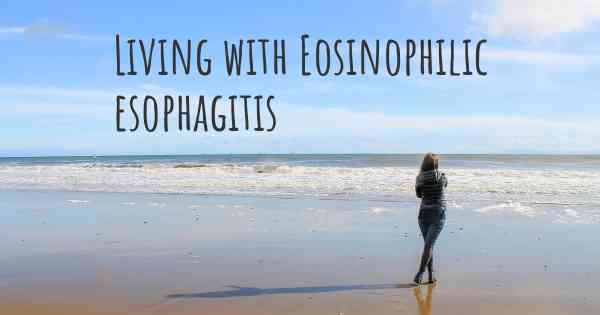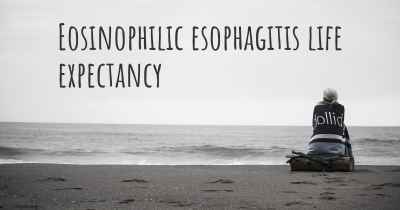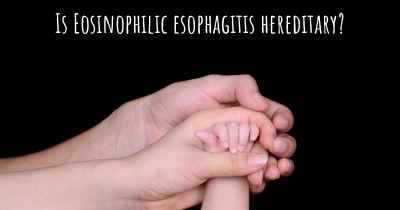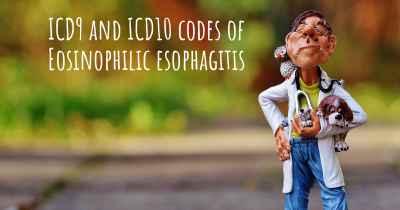Living with Eosinophilic esophagitis. How to live with Eosinophilic esophagitis?
Can you be happy living with Eosinophilic esophagitis? What do you have to do to be happy with Eosinophilic esophagitis? Living with Eosinophilic esophagitis can be difficult, but you have to fight to try to be happy. Have a look at things that other people have done to be happy with Eosinophilic esophagitis

Living with Eosinophilic Esophagitis
Eosinophilic esophagitis (EoE) is a chronic immune system disorder that affects the esophagus, the tube connecting the mouth to the stomach. It is characterized by an excessive buildup of eosinophils, a type of white blood cell, in the esophageal tissue. This condition can cause a range of symptoms, including difficulty swallowing, chest pain, heartburn, and food impaction.
Diagnosis and Treatment
If you have been diagnosed with EoE, it is important to work closely with your healthcare team to develop an individualized treatment plan. The primary goals of treatment are to alleviate symptoms, reduce esophageal inflammation, and prevent complications. Treatment options may include:
- Dietary Modifications: Identifying and eliminating trigger foods from your diet is often the first step in managing EoE. This may involve working with a registered dietitian to develop an elimination diet or following an elemental diet where only amino acid-based formulas are consumed.
- Medications: Your doctor may prescribe medications such as proton pump inhibitors (PPIs) to reduce stomach acid production or corticosteroids to suppress the immune response and reduce inflammation in the esophagus.
- Dilation: In cases where the esophagus becomes narrowed due to scarring or strictures, your doctor may recommend esophageal dilation. This procedure involves gently stretching the esophagus to improve swallowing.
Managing Symptoms
Living with EoE can be challenging, but there are several strategies that can help you manage your symptoms and improve your quality of life:
- Identify Trigger Foods: Keep a food diary to track your symptoms and identify any specific foods that may trigger flare-ups. Common trigger foods include dairy, wheat, soy, eggs, and certain fruits.
- Follow a Strict Diet: If certain foods consistently trigger symptoms, it may be necessary to eliminate them from your diet completely. This can be challenging, but working with a dietitian can help ensure you still receive proper nutrition.
- Eat Slowly and Chew Thoroughly: Taking your time to eat and thoroughly chewing your food can help reduce the risk of food impaction and make swallowing easier.
- Avoid Eating Late at Night: Eating close to bedtime can worsen symptoms, so try to finish your last meal or snack at least two to three hours before lying down.
- Elevate the Head of Your Bed: Raising the head of your bed by 6 to 8 inches can help prevent acid reflux and reduce nighttime symptoms.
- Manage Stress: Stress can exacerbate EoE symptoms, so finding healthy ways to manage stress, such as practicing relaxation techniques or engaging in regular exercise, can be beneficial.
Seeking Support
Living with a chronic condition like EoE can be emotionally challenging. It is important to seek support from healthcare professionals, friends, and family members who can provide understanding and encouragement. Additionally, connecting with support groups or online communities of individuals with EoE can offer valuable insights, tips, and a sense of belonging.
Regular Follow-ups
Regular follow-up appointments with your healthcare team are crucial to monitor your condition, adjust treatment plans if necessary, and ensure your overall well-being. These appointments may include endoscopies, biopsies, and other tests to assess the effectiveness of treatment and check for any complications.
Conclusion
Living with Eosinophilic esophagitis requires a proactive approach to managing symptoms and maintaining a healthy lifestyle. By working closely with your healthcare team, following a personalized treatment plan, and implementing strategies to minimize triggers and stress, you can effectively manage your condition and improve your quality of life.
Posted Sep 29, 2020 by EOS Network (Eosinophilic Diseases Charity)
Posted Sep 13, 2017 by Scholeigh 1700
Posted Feb 28, 2017 by Luis 1665








